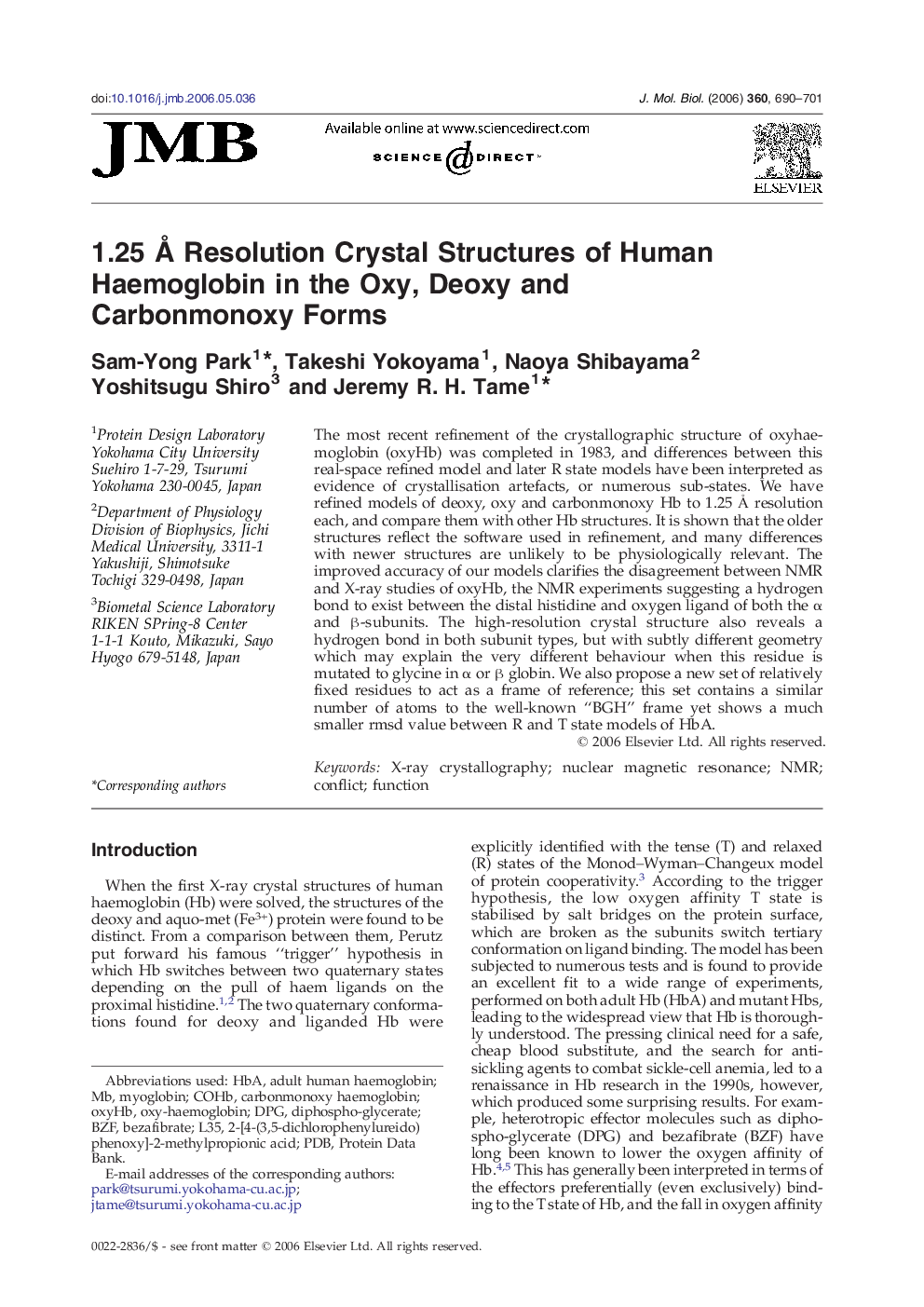| Article ID | Journal | Published Year | Pages | File Type |
|---|---|---|---|---|
| 2189443 | Journal of Molecular Biology | 2006 | 12 Pages |
The most recent refinement of the crystallographic structure of oxyhaemoglobin (oxyHb) was completed in 1983, and differences between this real-space refined model and later R state models have been interpreted as evidence of crystallisation artefacts, or numerous sub-states. We have refined models of deoxy, oxy and carbonmonoxy Hb to 1.25 Å resolution each, and compare them with other Hb structures. It is shown that the older structures reflect the software used in refinement, and many differences with newer structures are unlikely to be physiologically relevant. The improved accuracy of our models clarifies the disagreement between NMR and X-ray studies of oxyHb, the NMR experiments suggesting a hydrogen bond to exist between the distal histidine and oxygen ligand of both the α and β-subunits. The high-resolution crystal structure also reveals a hydrogen bond in both subunit types, but with subtly different geometry which may explain the very different behaviour when this residue is mutated to glycine in α or β globin. We also propose a new set of relatively fixed residues to act as a frame of reference; this set contains a similar number of atoms to the well-known “BGH” frame yet shows a much smaller rmsd value between R and T state models of HbA.
